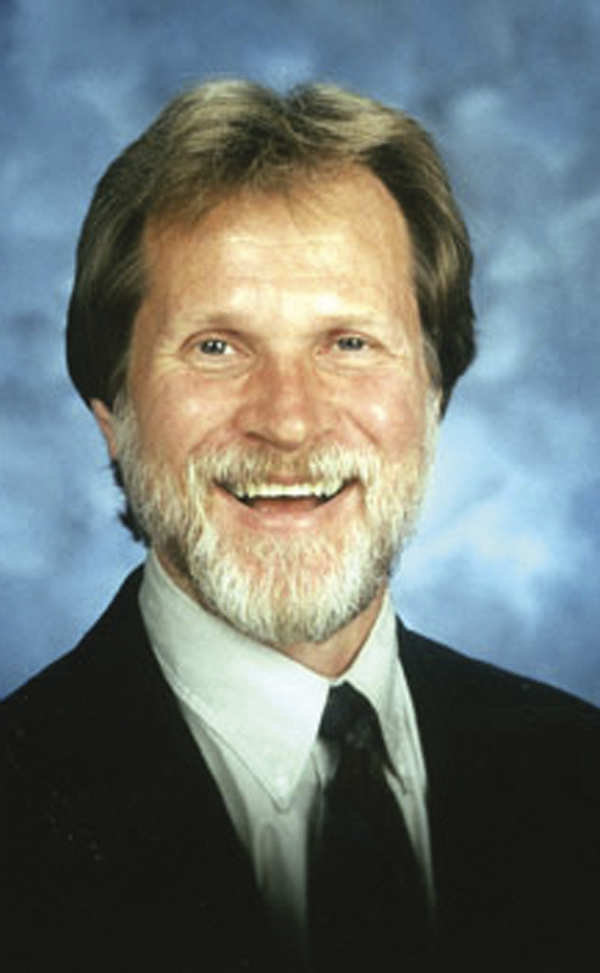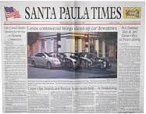
|
Carl Morehouse |
Carl Morehouse: New SCAG President’s
selection rare for local district
June 13, 2014
By Peggy Kelly
Santa Paula News
Last month the Southern California Association of Governments (SCAG) welcomed a new president: Ventura City Councilman and former Mayor Carl Morehouse.
Morehouse’s selection was a rare one for the specific SCAG District of Ventura, Santa Paula, Fillmore and Ojai, the area he has represented since 2001.
The last time someone from the district led the agency was decades ago: the late John Melton, a longtime Santa Paula City Councilman who also served as Mayor, also was SCAG President.
The late Al Urias, also a longtime council veteran, was a SCAG Director who Morehouse said, “Came close,” to leading the organization.
One of the very few professional land use planners to reach the top of the SCAG leadership, Morehouse has close ties to Santa Paula: he is married to the city’s Planning Director Janna Minsk.
Morehouse, who retired from the Ventura County Planning Department after 20 years, was first elected to the Ventura City Council in 1999.
SCAG is the nation’s largest metropolitan planning organization, representing six counties, 191 cities and more than 18 million residents. SCAG undertakes a variety of planning and policy initiatives to plan for a livable and sustainable Southern California now and in the future.
“I’ve trained my whole career to work on consensus building through a public process for the balanced good of all,” said Morehouse. “Planning isn’t just about zoning or setbacks. It’s an interdisciplinary practice. To do it right you need to look at issues from all angles.”
The main thrust of SCAG, the largest metropolitan planning agency in the United States, has been transportation planning coordinated on a larger regional basis.
Regional policy makers warn that years of neglect, population growth and an inability to pay for needed infrastructure improvements is pushing California toward a transportation meltdown that threatens the region’s economic stability, environment and quality of life.
Morehouse was a key proponent of SCAG’s 2012-2035 Regional Transportation Plan/Sustainable Communities Strategy, which identified more than $524 billion in transportation-related investments that would create 500,000 jobs per year and return $2.90 for every dollar invested.
Morehouse said it is a prime example of how SCAG can combine transportation planning needs with the desires to reduce the impact travel has on the environment while still maintaining a political and economic system that provides opportunities.
Nevertheless, Morehouse said it seems “The only time people really get engaged,” in SCAG is when the Regional Housing Needs Allocation undergoes state mandated updates.
The often-controversial RHNA outlines different levels of household income and housing needed to attain community balance.
“SCAG is mandated to take a number for the region projected by the state Department of Finance,” forecasting growth and housing needs based on age and income groups, among other factors, “and throw it on SCAG... they in turn look at each city’s General Plan’s Housing Element,” and recommend the numbers.
Morehouse said such action often leads to SCAG being perceived as “The bad guy, but in reality SCAG is there as a friend, not to force numbers on them,” but rather help cities with housing issues.
SCAG also promotes educators, businesses and policy makers to work together collaboratively to create employment opportunities in low-income areas.
Morehouse believes that “The true meaning of sustainability” is to keep the three “E’s” - economy, environment and social equity - in balance so that any one does not cancel out the others.
“Balancing these three is what begets a true quality of life,” and will help keep Southern California competitive.
But, “If one of these ‘E’s’ gets too far ahead of the others, we all lose in the end.”
And that means making sure no city is left behind: a second objective of Morehouse’s presidency is to ensure that smaller communities - those with a population of 25,000 or less - recognize SCAG as a resource.
“Smaller communities might not have a fulltime planning department and they might need assistance with population and demographics or land use analysis,” that SCAG will provide at no cost.
Said Morehouse, “Our region is much more inter-connected than we’d like to believe, but it underscores that old phrase: When one of us sneezes, others catch a cold.”
At a time “When we can’t get our acts together in Washington, DC,” SCAG can help by uniting forces on a localized level while raising awareness of its own goals.
“SCAG” said Morehouse, “is not a shadow government... when I was a Boy Scout we learned ready, aim, fire - not ready, fire,” and SCAG promotes a regional partnership to examine issues, target needs and implement solutions beneficial to all.
To find out more about SCAG visit www.scag.ca.gov



